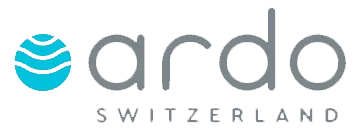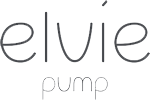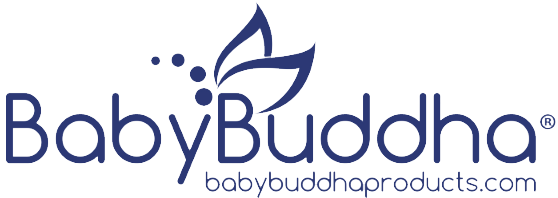Top Breastfeeding Essentials for New Moms: What to Buy and Why

Let’s be honest. There’s a lot of noise out there about what you need when a baby arrives. From your friend’s must-have suggestions to those perfectly curated “mom essentials” videos on Instagram, it can feel like everyone has a list you’re supposed to follow.
But when it comes to breastfeeding, the truth is simple. Your body and your baby are what truly matter. Still, a few thoughtfully chosen items can make those around-the-clock feeds feel a little more manageable, a little more comfortable.
This Mama Talk will walk you through the breastfeeding essentials that many moms are glad they had by their side, nothing over-the-top, just real support for real moments.
10 Breastfeeding Essentials You’ll Be Glad You Had

Some things you figure out as you go. Others, you’re just glad someone told you about it ahead of time. These are the small comforts and quiet helpers that can make nursing a little easier, especially in the early days when everything feels new.
Let’s start with the basics.
1. Nursing Bras
Most regular bras aren’t made for the early days of feeding. They can feel too tight, too structured, or just hard to manage when your baby wants to nurse often.
Nursing bras are designed to make things easier. They let you feed or pump without needing to undress or fumble with straps.
What to look for:
- Soft, wireless cups that don’t press on tender spots.
- Wide straps and a gentle, stretchy band.
- Easy-open clips or panels you can manage with one hand.
- Choose breathable fabric like cotton.
You don’t need a lot. 2-3 well-fitting bras are enough to rotate through the week.
2. Nipple Cream
Nipple pain is one of the most common early challenges. In one study, 79% of first-time moms reported soreness before even leaving the hospital.
A gentle nipple cream can ease discomfort, protect sensitive skin, and help you keep going when feeds are frequent and your body is still adjusting.
What to look for:
- Fragrance-free and safe to use while nursing
- Lanolin-based or plant-based options (like coconut oil or calendula)
- Something easy to apply and gentle on sensitive skin
Using nipple cream as a part of your daily routine can help prevent dryness before it starts.
3. Breast Pads
Your body is still adjusting, and breast pads can help you stay dry and comfortable between feeds. They’re simple, but surprisingly useful.
What to look for:
- Disposable pads for quick, no-fuss changes
- Washable pads for softness and reusability
- Breathable, gentle fabric
- A shape that fits well and stays in place
Stash a few where you feed or rest. You may not need them for long, but when you do, they’ll save you a change of clothes.
4. Nursing Pillow

A nursing pillow helps take pressure off your back, shoulders, and arms, especially helpful during long or frequent feeds.
Many moms find that a U-shaped or moon-shaped pillow gives just the right lift.
What to look for:
- A wraparound shape
- Firm, supportive fill
- A washable cover
Nursing Pillow vs Regular Pillow
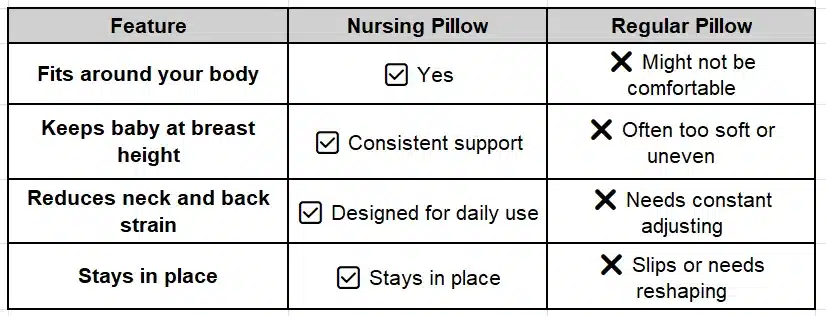
5. Water Bottle and Snacks
Breastfeeding takes more energy than many people realize. It’s common to feel thirsty or suddenly hungry while feeding, especially during those cluster-feeding days.
Keeping water and a few snacks nearby can help you stay nourished without having to get up in the middle of a session. It’s one of the easiest ways to care for yourself while caring for your baby.
What to keep close:
- A large water bottle that’s easy to sip one-handed
- Simple snacks like trail mix, granola bars, or fruit
- A small basket or tray near your feeding spot to hold everything
This is more than a comfort tip, your body needs fuel to keep producing milk and getting rest where it can. Make it easy on yourself.
6. Burp Cloths
Spit-up happens, and usually when you’re not expecting it. Burp cloths help you stay dry and save your clothes, especially during and after feeds.
What to look for:
- Soft, absorbent fabric
- Big enough to cover your shoulder
- Easy to wash
- Comes in a multipack
Keep a few in every room. You’ll reach for them more often than you think.
7. Nursing Covers (Optional)
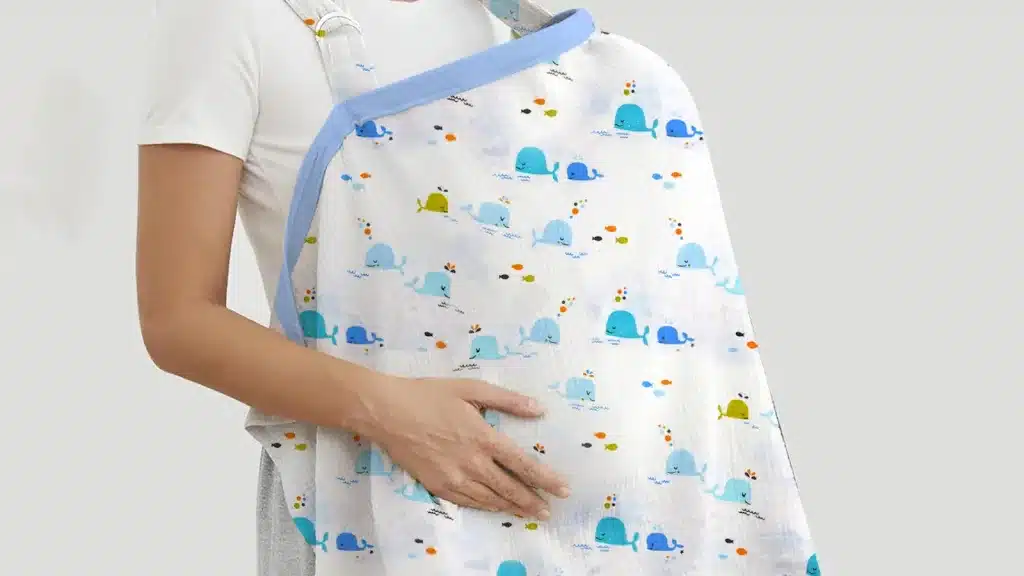
Some moms like a little privacy when feeding in public or around guests. A nursing cover can give you that extra layer of comfort if and when you want it.
What to look for:
- Lightweight, breathable fabric
- Easy to fold and carry
- A shape that gives you and your baby enough space to stay comfortable
Not every mom uses one, and that’s okay. What matters most is that you feel relaxed and supported while feeding, wherever you are.
8. Breast Pump
There may be times when nursing isn’t possible. Maybe you’re heading back to work, need to ease fullness, or want your partner to help with a feed. A breast pump lets you express milk while still supporting your feeding goals.
In fact, research shows that moms who pump tend to breastfeed longer, up to 21 weeks more, on average.
What to look for:
- Manual pumps for occasional use or travel
- Electric pumps for regular pumping
- Quiet, comfortable suction
- Easy-to-clean parts
Many moms are eligible for a free breast pump through insurance. You can check your options through Insurance Covered Breast Pump to see what’s covered for you.
9. Milk Storage Bags or Bottles
If you’re pumping, you’ll need a safe place to store your milk. Storage bags and bottles help you keep things organized, clean, and ready for your baby when you need a break or are away for a bit.
What to look for:
- BPA-free, leak-proof storage
- Bags that lay flat to save freezer space
- Bottles that fit your pump and are easy to label
- Clear measurement markings
Label everything with the date and use older milk first. Having extra milk on hand can give you peace of mind and sometimes a little extra rest, too.
10. Comfortable Chair or Feeding Spot
Having a calm, supportive place to sit can make a big difference when your body is tired and your baby needs your full attention.
What to look for:
- A chair with good back support
- A soft pillow or cushion
- A small table nearby for water, snacks, or burp cloths
- Low lighting to help you relax during night feeds
You don’t need a fancy setup. Just a quiet corner that feels like yours. A space that says, “You’re doing enough. Stay here as long as you need.”
What You Don’t Need Right Away
These items often make it onto wishlists and registries, but many new parents find they never really use them.
- Wipe Warmers: Promised comfort during diaper changes, but most parents stop using them within weeks. They can dry out wipes and add clutter.
- Bottle Sterilizers: Once your baby’s healthy and home from the hospital, washing with hot soapy water or using a dishwasher often does the job just fine.
- Multiple Bottle Types Before Testing: Babies often reject certain nipple styles. Start with one or two basics and see what your little one prefers before stocking up.
Every mom and baby is different. Some of these items might be helpful down the road or not at all. And that is perfectly okay.
Building Your Own Comfort Kit for Breastfeeding
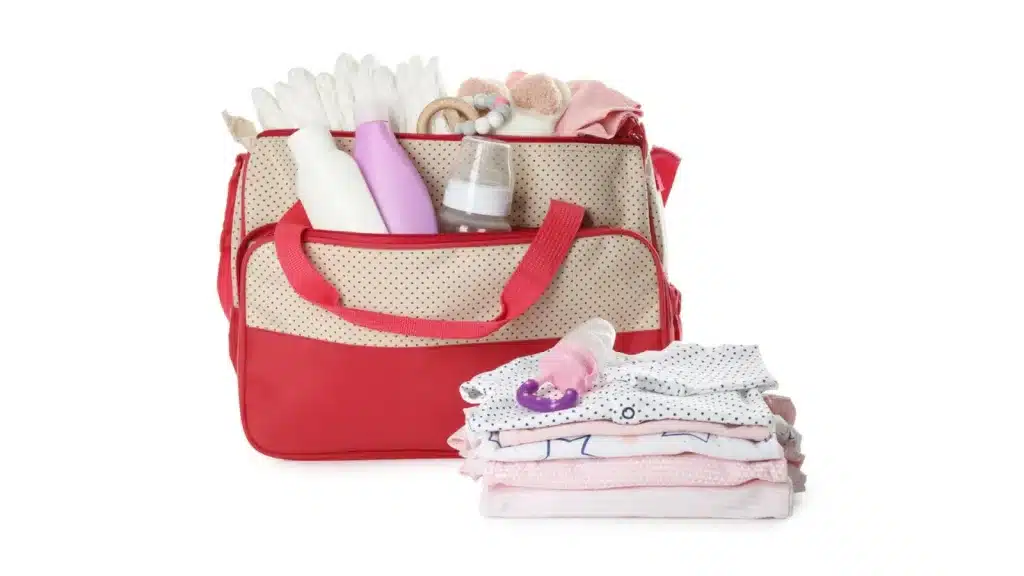
When you’re nursing day and night, little comforts can go a long way. Having a few small things close by can make breastfeeding days feel less draining and more supported.
You can keep them in a small basket or tucked beside your usual feeding spot.
Here are a few things many moms find helpful:
- A filled water bottle
- A couple of easy snacks like fruit, crackers, or a granola bar
- Lip balm for when the room feels dry
- A light blanket or wrap for warmth
- A phone charger within reach
- A soft burp cloth or extra nursing pad
- A notebook if you like to write things down
Think of it as a small way to care for yourself while you’re caring for your baby.
Final Words
Every feeding journey is its own story. What helps one mom feel supported might not be what another needs. There is no single list that fits everyone, only gentle ideas to make the days a little easier.
These early moments can feel tender, tiring, and full of change. If a few simple comforts give you more peace or ease, they’re worth keeping close.
You are adjusting, learning, and giving so much. And you are doing it with more strength than you know.
Frequently Asked Questions
1. When should I start buying breastfeeding essentials?
It helps to have the basics ready before your baby arrives, especially items like nursing bras, nipple cream, and breast pads. Other things, like a pump or storage bags, can wait until you know what your feeding routine looks like.
2. How many times a day will I be breastfeeding in the beginning?
Newborns usually feed 8 to 12 times in 24 hours. Having essentials nearby, like water, snacks, and burp cloths, can make those early days easier to manage.
3. Do I need a nursing bra right away in the hospital?
Yes, many moms find it helpful to wear a soft, stretchy nursing bra from day one. It gives gentle support and makes feeding or pumping easier without needing to undress.
4. How often should I replace nipple cream, breast pads, or milk storage bags?
Nipple cream lasts a while with light use. Breast pads may need changing several times a day. Milk storage bags are single-use, so keep a few packs on hand if you’re planning to pump regularly.
5. What if I’m not sure which items I’ll use?
Start with the essentials that offer comfort and support, like a nursing pillow, bra, and nipple cream. You can always add more based on your needs as you go.




